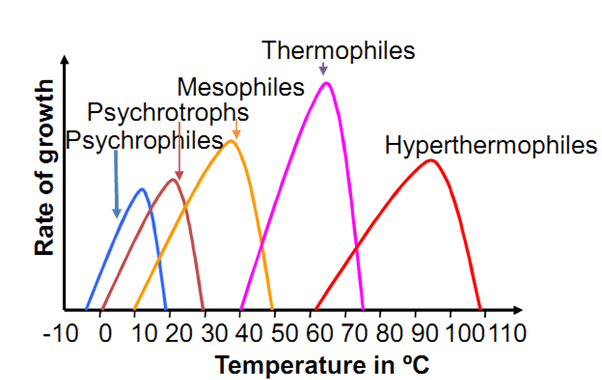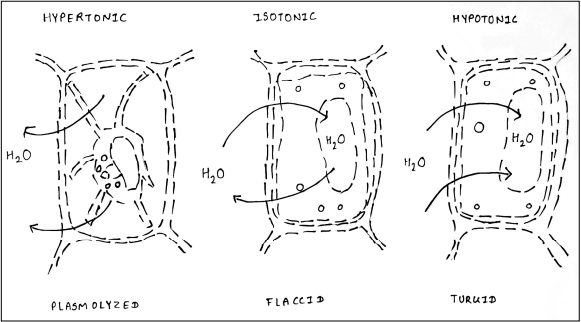Introduction –
Bacterial Growth is affected by nutritional and physical factors. The nutrients means the organic and inorganic material whereas the physical factors means pH, temperature, aerobic/anaerobic conditions. The bacteria need the nutrition and optimum physical environment to conduct its molecular, physiological activity and to multiply.
The bacteria needs a physical environment for carrying out the metabolic and molecular pathways. The range of temperature requirements varies from bacterial species to species. And hence, it is also used as a parameter for classifying bacteria.
The temperature beyond which bacteria cannot grow is called the maximum temperature. The optimum temperature means at which bacteria can grow at maximum rate. And the temperature below which bacteria cannot survive is called the minimum. On the basis of temperature requirement, the microorganisms are classified as –
- Thermophilic – The microorganisms that prefers or loves the temperatures beyond 40°C are called as Thermophiles.
- Hyperthermoohiles – the microorganisms that grows in temperature more than 80°C
- Mesophiles – the microbes that grows in the range of 20 to 40°C are called as mesophiles
- Psychrophiles – The microbes that grows between 0 to 20°C are called as psychrophiles.
- Cryophiles – The microbes that grows in less than 10°C

Principle-
The temperature affects the spatial arrangement of the atoms in the biomolecules and hence at the optimum temperature the biomolecules retain the stable and active structure which enables it to carry out its function. At low temperature, enzymes function very slowly or stop functioning. This is because low temperatures generally increase the viscosity of fluids and hardening of lipids. High temperatures cause rupture of hydrogen bonds in proteins and in DNA. This results in denaturation of proteins and enzymes and melting of DNA (separation of strands ).
Requirements –
- Sterile nutrient broth
- Test culture
- Nichrome wire
- Blank tube
- Microbial test culture
Procedure-
- Prepare the nutrient broth and dispense in test tubes.
- Autoclave the test tubes filled with nutrient broth.
- After autoclaving, label the tubes like 4°C, 30°C, 37°C, 55°C and 75°C.
- Inoculates two loopful of test culture in labelled test tubes by sterile nichrome wire.
- Keep one test tube as blank with nutrient broth.
- Incubate each tube for 24 hours as labelled.
- Measure the bacterial growth by measuring the optical density.
- Compare the tubes with a blank tube, observe and record the results.
Result –
The test microorganisms, Escherichia coli grows at its maximum rate at 37°C and its growth rate slows down or shuts down below 30°C and above 55°C.
Conclusion –
The optimum growth temperature of Escherichia coli is 37°C.
References –


